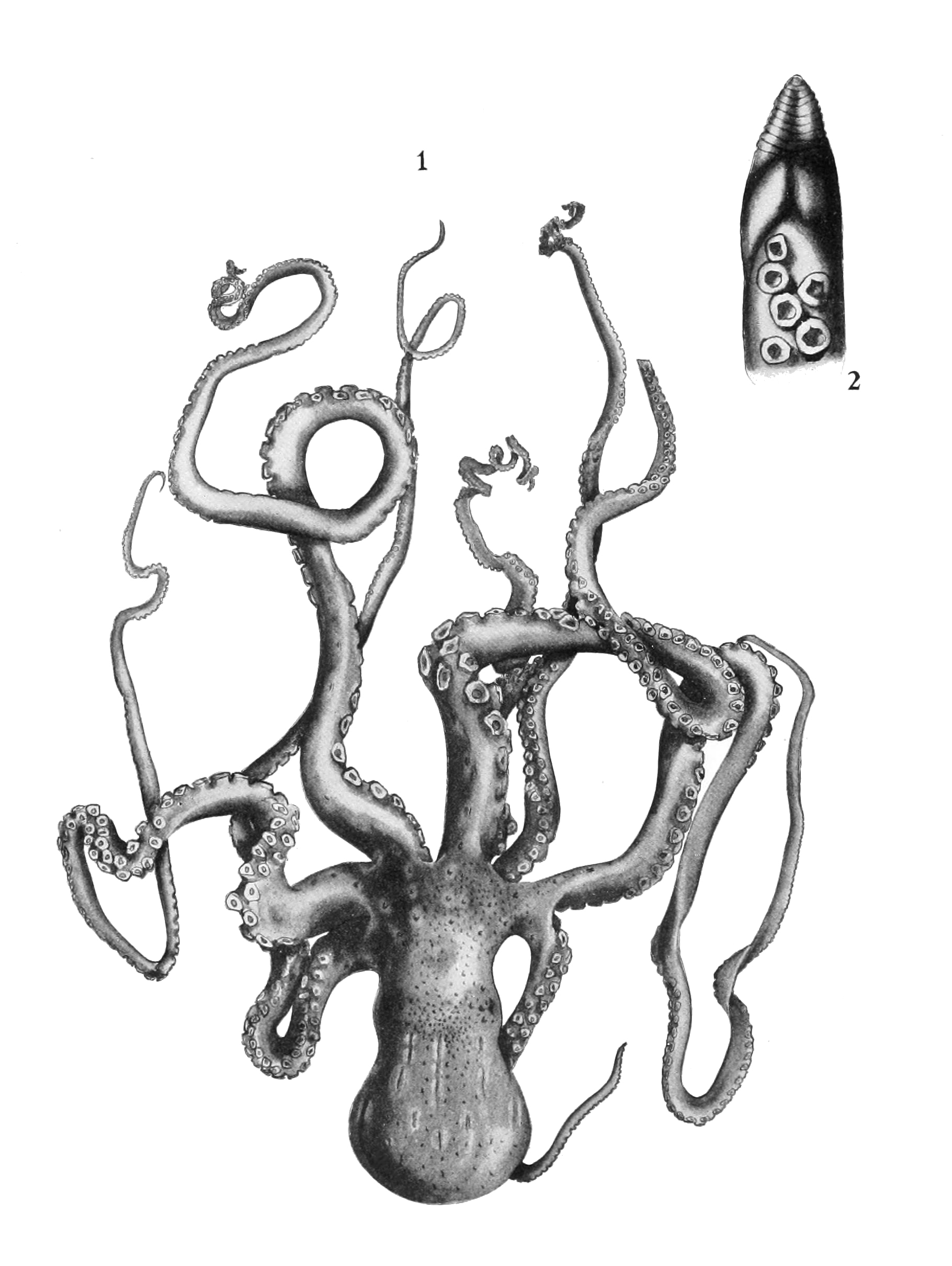Night Octopus on:
[Wikipedia]
[Google]
[Amazon]

 ''Callistoctopus ornatus'' (ornate octopus) is a tropical species of
''Callistoctopus ornatus'' (ornate octopus) is a tropical species of

octopus
An octopus (: octopuses or octopodes) is a soft-bodied, eight-limbed mollusc of the order Octopoda (, ). The order consists of some 300 species and is grouped within the class Cephalopoda with squids, cuttlefish, and nautiloids. Like oth ...
native to the Indo-Pacific region.Bouchet, P. (2014). Callistoctopus ornatus (Gould, 1852). Accessed through: World Register of Marine Species at http://www.marinespecies.org/aphia.php?p=taxdetails&id=534728 on 2015-02-01 Other common names include white-striped octopus and night octopus, in reference to its nocturnal habits. It was previously known as ''Polypus ornatus''. ''C. ornatus'' is edible and was recorded in a Hawaiian market in 1914 by S. S. Berry.
Description
The upper arms of ''Callistoctopus ornatus'' are much longer and thicker than the other arms. They are pink to red in colour with paired white spots down the arms and short longitudinal white stripes on their mantle. This species can weigh several kilograms, and can reach an armspan of up to . The body is oval-shaped to elongate and the eyes are large. The arms are about six times the length of the body with the front pair being the longest. Each arm has two rows of suckers. The webs are shallow. The skin is fairly smooth with long flaps able to be raised in the white stripes on the sides of the body.Distribution
This species has one of the widest distributions of all octopus, because of the planktonic life stage of the hatchlings. It is found throughout tropical waters in the Indo-Pacific, from Hawaii and Easter Island to South Africa. In Australian waters it is found from northernNew South Wales
New South Wales (commonly abbreviated as NSW) is a States and territories of Australia, state on the Eastern states of Australia, east coast of :Australia. It borders Queensland to the north, Victoria (state), Victoria to the south, and South ...
around the northern coastline to Perth in Western Australia. The distribution of this octopus appears to be limited to tropical waters within the isotherm. However, specimens collected in the warm temperate waters of New South Wales are probably a result of the planktonic juveniles being carried south by the warm East Australian Current.
Habitat
Adults are usually found on coral reefs. Lairs found on the southern Great Barrier Reef consist of deep vertical holes excavated in coral rubble. The entrances are sealed during the day with rubble.Diet
These octopus eat mainly fish andcrustaceans
Crustaceans (from Latin meaning: "those with shells" or "crusted ones") are invertebrate animals that constitute one group of Arthropod, arthropods that are traditionally a part of the subphylum Crustacea (), a large, diverse group of mainly aquat ...
. They hunt at night and can be observed foraging over reef flats or on sand and gravel substrate during nightly low tides. Hunting consists of probing long arms down holes or enveloping small coral heads within the webs and using the arm tips to flush prey into the waiting suckers. The stomach contents also regularly contain the beaks of other octopus species. Other night-active octopuses in the same habitat flee in an explosion of ink if a single arm of this octopus touches them.
Reproduction
Nothing is known of mating behaviour. Females lay up to 35,000 small eggs, each about long. The hatchlings swim up into the plankton and are carried away by surface currents. Eventually they settle in a new coral reef and develop into adults.Use by humans
This octopus is harvested by subsistence hunters throughout its range. Historically it was collected by Polynesian Hawaiians using torches to find foraging animals at night. The animals were then killed with hand spears.References
*Gould, A.A. 1852. United States exploring expedition during the years 1838–1842. Mollusca and Shells. U.S. Exploring Expedition, 12: i-xv, 1-510; 1852, with an Atlas of plates, 1856. * Norman M.D. & Hochberg F.G. (2005) ''The current state of Octopus taxonomy''. Phuket Marine Biological Center Research Bulletin 66:127–154. {{Taxonbar, from=Q13449624 Octopodidae Marine molluscs of Asia Molluscs of the Pacific Ocean Molluscs of the Indian Ocean Cephalopods described in 1852 Taxa named by Augustus Addison Gould